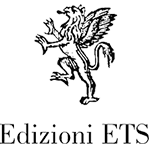The encounter between experience, writing and images in the pages of an illustrated book
DOI:
https://doi.org/10.4454/graphos.67Keywords:
picture books, teacher training, didactics, narrative pedagogy, relationship between image and textAbstract
This article discusses some basic ideas on how the creation of illustrated books can cultivate teacher-oriented narrative knowledge and, at the same time, accompany the development and shaping of educational knowledge. Having explored the most significant aspects of the relationship between image and text and identified the different nuances of visual and verbal artistic stimuli, we can consider the illustrated book as a cultural product and an educational resource to encourage research, reflection and narrative creation on the one hand, and to enhance reading and interpretation skills on the other. To this end, we have proposed the creation of illustrated books by pupils of the Primary Education degree course at the University of Valencia (Spain) in order to subsequently analyse their contents and the different forms of narration of reality observed by the authors of the works. To conclude, we will examine the results, future prospects and limitations of this study.
References
Alheit P. (2005). Stories and structures: An essay on historical times, narratives and their hidden impact on adult learning. Studies in the Education of Adults, n. 2, pp. 201-212.
Aranguren J.L.L. (1981). Sobre imagen, identidad y heterodoxia. Madrid: Taurus Ediciones.
Arizpe E. (2010). The voices behind the pictures: Children responding to postmodern picturebooks. Postmodern picturebooks. New York: Routledge.
Bruner J. (1998). Acción, pensamiento y lenguaje. Madrid: Alianza.
Cáceres P. (2008). Análisis cualitativo de contenido: una alternativa metodológica alcanzable. Psicoperspectivas. Individuo y sociedad, n. 1, pp. 53-82. https://dx.doi.org/10.5027/ psicoperspectivas-Vol2-Issue1-fulltext-3.
Cerrillo Torremocha P.C. (2010). Literatura infantil y juvenil y educación literaria. Barcelona: Octaedro.
Duran T. (2009). Álbumes y otras lecturas. Análisis de los libros infantiles. Barcelona: Octaedro.
Hunt P. (2001). Children’s literature. Nueva Jersey: Wiley-Blackwell.
Munari B. (2018). Fantasia: invenzione, creatività e immaginazione nelle comunicazioni visive. Roma: Gius. Laterza.
Negri M. (2016). Dal verso al giro di pagina. Testualità e valenze educative dell’albo illustrato. Ricerche Di Pedagogia E Didattica. Journal of Theories and Research in Education, n. 3, pp. 117–138. https://doi.org/10.6092/issn.1970-2221/6451
Nikolajeva M., Scott C. (2000). The dynamics of picturebook communication. Children’s literature in Education, n. 31, pp. 225-239.
Nikolajeva M., Scott C. (2006). How Picturebooks Work (Children’s Literature and Culture). New York: Routledge.
Nodelman P. (2008). The Hidden Adult. Defining Children’s Literature. Baltimore: The John Hopkins University Press.
Rodari G. (1973). Grammatica della fantasia. Introduzione all’arte di inventare storie. Torino: Einaudi.
Rodríguez F.V. (2014). Elementos para una lectura del libro álbum. Enunciación, n. 2, pp. 333-345. http://dx.doi.org/10.14483/udistrital.jour.enunc.2014.2.a12
Terrusi M. (2012). Albi illustrati. Leggere, guardare, nominare il mondo nei libri per l’infanzia. Roma: Carocci.
Van der Linden S. (2013). Album[s]. Paris: Editions De Facto/Actes Sud.
Downloads
Published
How to Cite
Issue
Section
License
Copyright (c) 2023 Donatella Donato

This work is licensed under a Creative Commons Attribution 4.0 International License.




 Edizioni ETS s.r.l. LUNGARNO MEDICEO 16 - 56127 - PISA
Edizioni ETS s.r.l. LUNGARNO MEDICEO 16 - 56127 - PISA